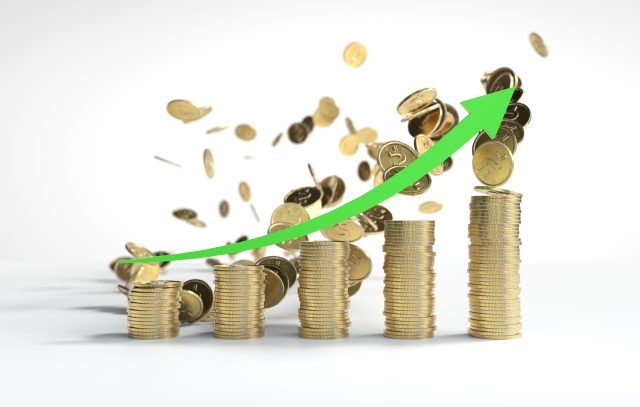
If there’s one financial concept every investor—beginner or expert—should understand, it’s compound interest. Albert Einstein reportedly called it the “eighth wonder of the world,” and for good reason. Compound interest has the power to turn modest, consistent contributions into significant wealth over time.
In this article, we’ll explain how compound interest works, show you why time is your greatest asset, and walk through real examples of how small investments can grow into a sizeable portfolio—even if you’re starting with just a few dollars a week.
What Is Compound Interest?
Compound interest is the process of earning interest not just on your original investment (the principal), but also on the interest your money earns over time. In other words, your money grows on itself.
The more frequently interest is compounded (daily, monthly, annually), and the longer you let your investment sit, the more your wealth accelerates. The effect is exponential—not linear—so the gains get bigger over time.
Simple Interest vs. Compound Interest
Let’s break it down with an example.
- Simple interest: If you invest $1,000 at a 5% annual return for 10 years, you earn $500 in interest ($50 per year × 10 years). Total: $1,500.
- Compound interest: If that same $1,000 is invested at a 5% annual return and compounded annually for 10 years, it grows to about $1,628.89. That’s $128.89 more than simple interest, and you didn’t lift a finger.
Now imagine the difference over 30 or 40 years—compound interest doesn’t just add, it multiplies.
The Formula Behind Compound Interest
The basic compound interest formula is:
A = P × (1 + r/n)ⁿᵗ
Where:
- A = the future value of the investment/loan
- P = initial principal balance
- r = annual interest rate (as a decimal)
- n = number of times interest is compounded per year
- t = number of years
You don’t need to memorize this, but it’s helpful to know that time (t) and compounding frequency (n) have a big impact on your investment growth.
Real-World Example: Starting Early Pays Off
Let’s say two people invest in the stock market, which historically returns an average of about 7% annually after inflation.
- Investor A invests $100 per month starting at age 25
- Investor B invests $200 per month but waits until age 40
At age 65, who has more money?
- Investor A contributes $48,000 over 40 years
- Total value: approximately $240,000
- Investor B contributes $60,000 over 25 years
- Total value: approximately $145,000
Despite contributing less money, Investor A ends up with nearly $100,000 more. Why? Time. Compound interest had an extra 15 years to work its magic.
Even Small Amounts Add Up
One of the biggest misconceptions about investing is that you need a lot of money to get started. The truth is that consistent, small investments matter more than large, one-time contributions.
Here’s how much you could accumulate by investing just $25 per week:
- At 7% annual return over 10 years: ~$18,000
- Over 20 years: ~$52,000
- Over 30 years: ~$122,000
- Over 40 years: ~$254,000
That’s over a quarter of a million dollars from less than $5 a day.
Where Can You Earn Compound Interest?
Compound interest works in many types of accounts and investments:
- High-yield savings accounts (compounded daily or monthly)
- Certificates of deposit (CDs)
- Bonds
- Dividend-paying stocks
- Stock index funds and ETFs
- Retirement accounts (401(k), IRA, Roth IRA)
Stock market investments don’t “pay” compound interest like a bank account, but reinvested dividends and capital gains effectively compound your returns the same way.
How to Maximize Compound Growth
If you want to take full advantage of compound interest, here’s what to focus on:
- Start Early
The earlier you begin, the more time compound interest has to grow your money. - Be Consistent
Invest regularly—weekly, monthly, or bi-weekly—even if it’s just a small amount. - Reinvest Earnings
If you receive dividends or interest, reinvest them. This supercharges compounding. - Avoid Unnecessary Withdrawals
Every time you take money out, you interrupt the compounding cycle. - Choose Investments with Solid Returns
Aim for long-term investments like index funds that historically yield 6–8% annually. - Be Patient
The biggest gains come in the later years. Stick with it—even when the market dips.
Compound Interest vs. Inflation
One final point: compound interest helps your money outpace inflation. If inflation is averaging 2–3% annually and your investments are earning 7–8%, you’re growing your real wealth. Letting cash sit in a checking account earning nothing actually loses value over time.
Conclusion
Compound interest is one of the most powerful forces in personal finance—and it rewards those who start early, stay consistent, and think long-term. You don’t need to be rich to take advantage of it. With just a few dollars a week and a commitment to time, you can build meaningful wealth.
Start today. Your future self will thank you






















